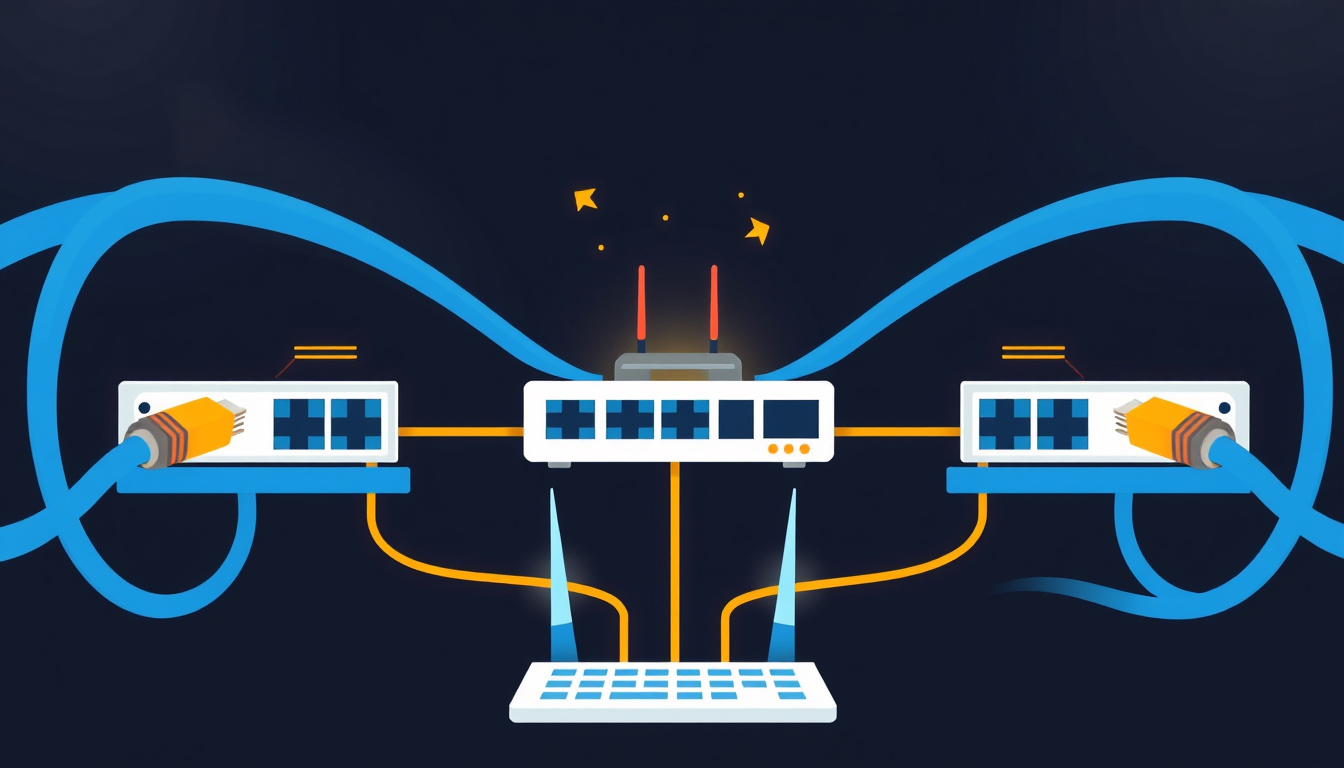In an age where connectivity is king, understanding Ethernet is essential for anyone engaged in either personal or professional networking. As a foundational technology for local area networks (LANs), Ethernet provides a framework for transmitting data at high speeds with impressive reliability and security. This guide will unravel the intricacies of Ethernet, exploring its evolution, functionality, advantages, and applications in modern networking.
What is Ethernet?
Ethernet refers to a specialized technology for wired networking that allows devices to communicate within a local area network (LAN), metropolitan area network (MAN), or wide area network (WAN). First introduced in the early 1970s and standardized by IEEE in 1983 under the 802.3 specification, Ethernet has undergone significant evolution to support higher speeds and broader applications, from home networks to industrial systems.
At its core, Ethernet operates on a simple premise: it defines a set of rules that govern how data packets are formatted and transmitted over cabling. The technology utilizes frames that contain both data and addressing information, allowing devices on the same network to recognize and receive the intended communications.
The Evolution of Ethernet
Ethernet’s journey began with its early iterations employing coaxial cables to connect computers in a network. Over the decades, significant milestones include:
- 1980s: The launch of 10 Mbps Ethernet, establishing a new standard for LAN connectivity.
- 1990s: The introduction of Fast Ethernet (100 Mbps), significantly enhancing data transfer rates.
- 2002: Gigabit Ethernet (1 Gbps) paved the way for modern high-speed internet.
- 2003-2010: Emergence of Power over Ethernet (PoE), allowing devices to receive power and data through a single Ethernet cable. Subsequent iterations saw speeds soar to 10 Gbps and beyond.
Today, Ethernet technology supports speeds of up to 400 Gbps, with ongoing research pushing the boundaries even further.
How Ethernet Works
Ethernet utilizes a protocol for transmitting data over physical media, most commonly twisted-pair cables or fiber optics. The technology’s operation can be broken down into a few key components:

-
Frames and Packets: Ethernet data is transmitted in packets wrapped within frames, which include source and destination addresses, error-checking information, and more.
-
Network Interface Card (NIC): Each device on the Ethernet network requires a NIC to facilitate communication over Ethernet. The NIC handles the data transfer to and from the device.
-
Switches and Hubs: Modern Ethernet networks predominantly use switches instead of hubs. Switches are more efficient as they send data only to the intended device, greatly reducing collisions and improving security.
-
Topologies: Ethernet networks can utilize various topologies (e.g., star, bus) to optimize the arrangement of devices.
Advantages of Ethernet
Ethernet’s enduring popularity stems from several notable advantages:
- Speed: Ethernet consistently offers faster data transfer rates compared to Wi-Fi connections.
- Reliability: Physical connections are generally more stable, reducing interruptions and transmitting errors.
- Security: By requiring physical access through cabling, Ethernet limits exposure to unauthorized access and provides an additional layer of security.
- Backward Compatibility: New standards maintain compatibility with older technologies, simplifying upgrades and integration.
Disadvantages of Ethernet
Despite its many benefits, Ethernet is not without its drawbacks:
- Limited Mobility: Wired connections are less flexible compared to wireless solutions, requiring physical cabling between devices.
- Installation Complexity: Running Ethernet cables, especially in large environments, can be labor-intensive and disruptive.
- Distance Limitations: Ethernet performance can degrade over long distances, necessitating additional equipment for extensive coverage.
Ethernet vs. Wi-Fi
While Ethernet offers superior performance, it does face competition from wireless technologies such as Wi-Fi. Here are key differences:
- Mobility: Wi-Fi permits greater flexibility, allowing devices to connect without physical cables.
- Installation: Setting up a Wi-Fi network typically requires less effort than configuring an Ethernet network.
- Speed and Stability: Ethernet usually delivers more consistent speeds and lower latency than Wi-Fi, particularly in environments with substantial interference.
Practical Applications of Ethernet
Ethernet remains fundamentally relevant in numerous settings:
- Home Networks: For households that demand consistent, high-speed internet for devices like smart TVs and gaming consoles, Ethernet is the optimal choice.
- Business Environments: Offices and institutions utilize Ethernet for network reliability, supporting crucial tasks such as data transfer, printing, and server management.
- Industrial Uses: Industries leveraging Industrial Ethernet benefit from robust, high-speed communication systems, essential for automation and data-driven operations.
Conclusion
Ethernet stands as a cornerstone of networking technology, continuing to evolve and adapt to modern demands. Its inherent qualities of speed, reliability, and security make it indispensable for personal and professional users alike. Whether you’re crafting a home network or establishing a commercial infrastructure, understanding Ethernet equips you to make informed decisions about your connectivity needs. Embrace the power of Ethernet and unlock the full potential of your networking experience.



